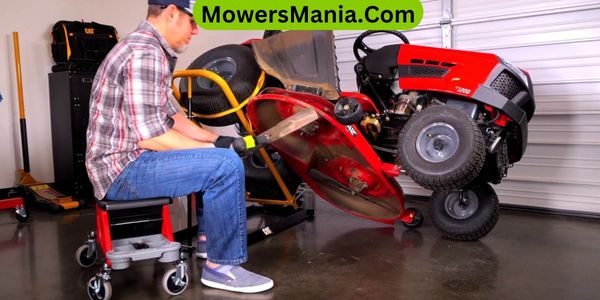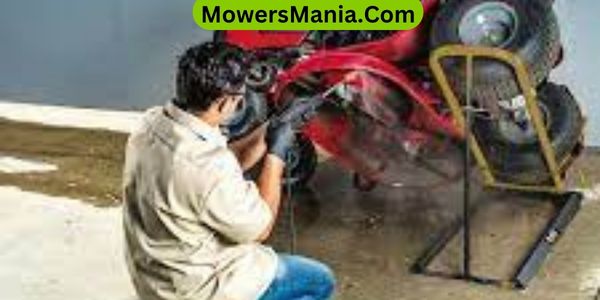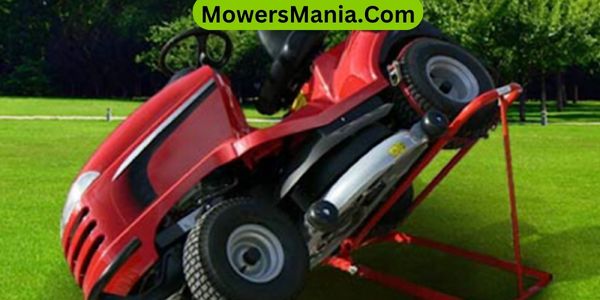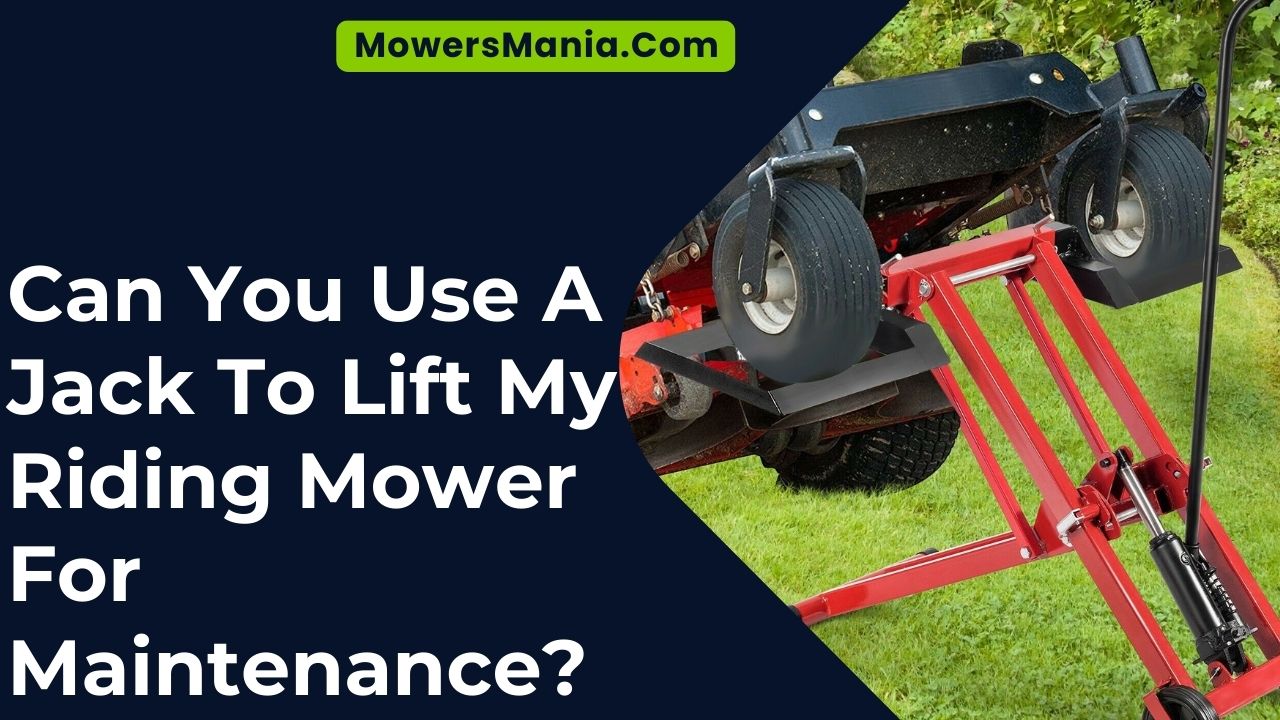You might be wondering if using a jack to lift your riding mower for maintenance is safe and practical. The truth is, using a jack can be a convenient way to access the underside of your riding mower for routine maintenance tasks.
However, before you grab your jack and start lifting, there are important factors to consider to ensure both your safety and the effectiveness of the maintenance. Understanding the potential risks and limitations, as well as the proper lifting points, is crucial.

So, let’s explore the best practices for using a jack to lift your riding mower and what alternatives might also be worth considering.
Safety Considerations
What are the essential safety precautions to keep in mind when using a jack to lift your riding mower for maintenance?
First and foremost, ensure that the riding mower is on a level surface before attempting to lift it with a jack. This will prevent any instability or tipping over while you work underneath it.
Additionally, always engage the parking brake and turn off the engine to eliminate any risk of accidental movement.
It’s crucial to use a jack that’s specifically designed to lift heavy equipment like riding mowers. Regular car jacks aren’t suitable and may lead to dangerous accidents.
When positioning the jack, make sure it’s placed under the mower’s frame or another designated lifting point specified in the manual.
Never work under a riding mower supported only by a jack; always use jack stands as an extra safety measure.
Lastly, wear appropriate safety gear such as gloves and safety goggles to protect yourself from any debris or fluids that may fall during maintenance.
Types of Jacks to Consider
When considering the types of jacks to use for lifting your riding mower, it’s essential to prioritize safety and choose a jack specifically designed for heavy equipment like riding mowers.
Using the right jack can make a significant difference in the safety and efficiency of lifting your riding mower for maintenance.
Here are three types of jacks to consider:
- Hydraulic Floor Jack: This type of jack is a popular choice for lifting riding mowers due to its stability and weight-bearing capacity. It provides a stable platform for lifting heavy equipment and allows for precise control when raising and lowering the mower.
- Bottle Jack: Bottle jacks are compact and powerful, making them suitable for lifting riding mowers. They’re easy to maneuver and can provide a high level of lifting capacity, making them a practical option for maintenance tasks.
- Lift Table: A lift table is a specialized jack designed for heavy equipment like riding mowers. It offers a stable and secure platform for lifting the mower to a comfortable working height, allowing for easy access to the underside for maintenance and repairs.
Consider the specific requirements of your riding mower and the ease of use when selecting the appropriate jack for lifting and maintaining your equipment.
Proper Lifting Points

To lift your riding mower safely and effectively, it’s crucial to identify and utilize the proper lifting points on the mower’s frame. These lifting points are specifically designed to bear the weight of the mower without causing damage to the undercarriage or other components.
The most common lifting points on a riding mower are the front and rear axles. When using a jack to lift the front of the mower, position the jack under the front axle near the wheels. For lifting the rear of the mower, the jack should be placed under the rear axle.
It’s important to ensure that the jack is securely positioned and that the mower is on a level surface before lifting. Additionally, consult your mower’s manual for specific guidance on lifting points and proper jack usage.
Using the correct lifting points will help distribute the weight evenly and prevent any potential damage to the mower’s frame or components. Always prioritize safety and follow proper lifting procedures when maintaining your riding mower.
Risks and Limitations
Be mindful of the potential risks and limitations when using a jack to lift your riding mower for maintenance. While using a jack can be a convenient way to access the underside of your mower for maintenance, it’s important to understand the potential dangers and constraints involved.
Here are some risks and limitations to consider:
- Stability: Riding mowers are heavy and can be unstable when lifted. Using a jack that isn’t designed for the specific weight and dimensions of your mower can lead to instability and potential tipping, causing serious injury or damage.
- Ground clearance: Some jacks may not provide enough ground clearance for certain maintenance tasks, such as removing the mower deck or accessing the blades. This limitation can hinder your ability to effectively perform maintenance.
- Jack capacity: It’s crucial to ensure that the jack you use has the capacity to lift your riding mower safely. Using a jack with insufficient capacity can result in mechanical failure and pose a significant safety hazard.
Understanding these risks and limitations will help you make informed decisions about using a jack to lift your riding mower for maintenance, ensuring both your safety and the effectiveness of the maintenance tasks.
Alternative Lifting Methods

Considering the risks and limitations of using a jack to lift your riding mower for maintenance, exploring alternative lifting methods is essential for ensuring safety and efficiency.
One alternative method is using a lawn tractor lift, specifically designed for lifting riding mowers. These lifts provide a stable platform and are equipped with safety features to prevent the mower from slipping or falling during maintenance.
Another option is using ramps designed for driving the mower onto a raised platform, allowing easy access to the underside for maintenance tasks.
Additionally, a hydraulic floor jack with a lifting capacity suitable for your riding mower can be used in conjunction with jack stands to provide a stable and elevated platform for maintenance.
Some individuals also opt for using a sturdy wooden or metal frame to raise the mower, ensuring that it’s securely supported before performing any maintenance.
When exploring alternative lifting methods, always prioritize safety and ensure that the chosen method is suitable for the specific model and weight of your riding mower.
Frequently Asked Questions [FAQs]
Is It Safe to Use a Car Jack to Lift a Riding Mower for Maintenance?
Yes, it’s safe to use a car jack to lift your riding mower for maintenance. Make sure to follow safety precautions and use the right size jack. Always support the mower properly.
Can I Use a Hydraulic Floor Jack for Lifting My Riding Mower?
Yes, you can use a hydraulic floor jack to lift your riding mower for maintenance. Ensure the jack is placed on a stable, level surface and follow the manufacturer’s guidelines for lifting and supporting the mower safely.
Are There Any Specific Lifting Points I Should Avoid When Using a Jack on My Riding Mower?
When using a jack on your riding mower, avoid lifting from the mower deck or any plastic components. Instead, use designated lifting points, like the frame or axles, to safely elevate the mower for maintenance.
What Are the Risks of Using a Jack to Lift a Riding Mower, and How Can I Minimize Them?
To minimize risks when using a jack to lift a riding mower, position it on a flat, stable surface and avoid overloading the jack. Ensure the mower is securely supported before starting maintenance, and always follow safety guidelines.
Are There Any Alternative Methods for Lifting a Riding Mower That I Should Consider?
Consider alternative methods for lifting a riding mower, like using ramps, a lifting hoist, or a hydraulic lift table. These options can provide safer and more stable support for maintenance tasks, reducing the risk of accidents.
Conclusion
In conclusion, using a jack to lift your riding mower for maintenance can be a convenient option, but it’s important to prioritize safety and use the proper equipment.
Consider the type of jack to use, locate the proper lifting points on the mower, and be aware of the risks and limitations.
Always have a backup plan and consider alternative lifting methods to ensure your safety and the safety of your equipment.



